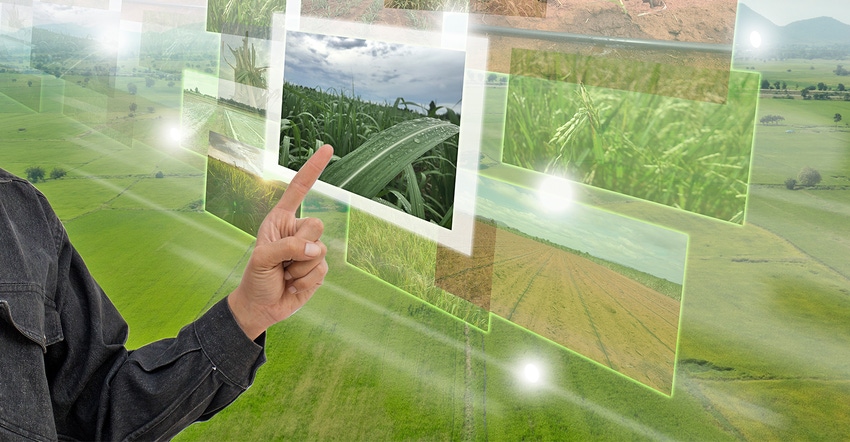April 26, 2018

Most farmers are struggling with this whole big data issue. You’re still collecting the information since much of that can be automatic. But what can you do with the information for better decision-making for the future? And in one area, benchmarking, how can you best put that to work in your farm business?
Three groups are teaming up with data, services and weather information to help farmers better use the information they’re collecting on the farm. Grower Information Services Cooperative is a grower-run data cooperative that allows farmers to gather and store their collected data in a central location that is trusted by producers.
GISC is teaming up with two data players to provide a suite of data-driven solutions for members. The partners include IBM and Main Street Data.
You know IBM, and the firm does own The Weather Co., providing access to a range of weather-related products. The company is also a leader in the “internet of things” movement — connecting sensor networks to provide improved field information.
Main Street Data has an interesting product. The firm owns calibrated yield data from thousands of fields across 26 states that were collected over a seven-year period by FarmLink using the MachineryLink combine fleet, which had about 250 to 350 combines leased in any given year. “We have a data set from a combine fleet that’s divided into 1.5 billion micro fields 150 square feet in size,” says Ron LeMay, Main Street CEO.
LeMay is a former Sprint executive who was part of a group that bought assets from FarmLink, including this data set that he says has tremendous value for farmer-customers.
“This is a fully calibrated data set, offering farmers precise information they can use to compare their farms to help improve returns,” LeMay says.
LeMay’s background with Sprint, another leader in the development of internet of things technology, gives him some credibility as he embarks on the new partnership with GISC.
Billy Tiller an early founder of GISC, says he’s excited about the new partnership. “We need to move ahead, and this is technology farmers can use to accurately measure the results from their operations, and find ways to change farming practices to get better results. ‘You can’t manage what you can’t measure’ is a LeMay saying, and I believe it,” he says.
New services available
As a farmer-focused cooperative effort, GISC is working to develop products through the partnership with an eye toward practical use. Here’s a rundown of the first phase of solutions that will come from this partnership starting in May:
• GISC membership, which provides farmers with a secure storage platform for all of a farmer’s data. This allows farmers to collect data from several sources and manage that information from a central point. No matter what brand of equipment you have, the information can be moved into this data system, thus allowing the producer full autonomy and control of the data. Initially, the system can work with major crops including corn, soybeans, wheat, cotton and sorghum. Future phases will allow for specialty crops, fruits and vegetables.
• The Validator, which will be part of the Main Street Data partnership. This is a benchmarking tool that can assist farmers in identifying whether farming practices are producing the expected outcomes. LeMay explains that while farmers will say no two farms are alike, the data set is so large that benchmarking is possible. The system can rank a farm operation’s yields at the subfield level on a scale of the fifth to 95th percentile. The percentile ranking is according to yields on each 150-square foot micro-field level as compared to other micro fields with similar characteristics, while factoring out the weather’s effect on those yields.
• Market Vision will provide an in-season productivity assessment and decision tool designed to maximize marketing opportunities, such as when to sell and how much The system is a data analytics tool that Tiller says is as sophisticated as those used by big grain traders.
• GISC’s National Crop Registry, which is included in the membership. This tool allows growers to register crops by field and is designed to assist growers in the survey of neighboring farmland. This can help address some problems associated with chemical drift. Details are now available for growers, chemical applicators and crop input providers. IBM and its weather products will be used to help farmers anticipate wind speeds, and the potential for temperature inversions during applications.
“We don’t sell seed, or chemicals, and never will,” Tiller says. “We are an agnostic partner with the farmer that provides a data solution, and we’re just getting started with these new services.”
He says he has worked for years to build a data cooperative to focus on data analytics and solutions “without the conflict inherent in selling physical products. With Main Street Data, I knew I had found a partner that shared my goals and values.”
Membership in the cooperative is $500 per year, which include access to that crop registry and the data storage capability. The Validator is a premium service that Tiller says would be less than $1 per acre for a benchmark set for your farm. This is a service you can use to validate your farm’s agronomic performance independently, including the cost/benefit of inputs and technologies used.
Learn more about the products at gisc.coop.
About the Author(s)
You May Also Like






